We are no longer building saddle trees, but we have two videos about how Western saddles fit horses available on our westernsaddlefit.com website.
Why We Use Hand Hole Width Instead of Gullet Width
What gullet width is meant to do
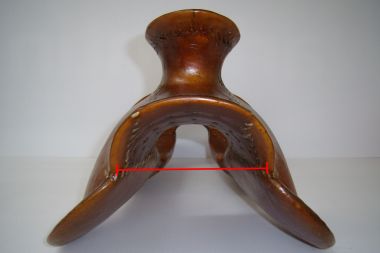
Traditionally, the gullet width measurement has been used to set the spread between the bars. However, the front of the gullet is a very inconsistent place to measure for bar spread as explained below. The front gullet width measurement can easily be changed without altering the real width between the bars. However, the hand hole is a consistent measurement of the distance between the bars.
Stock thickness effect on gullet width
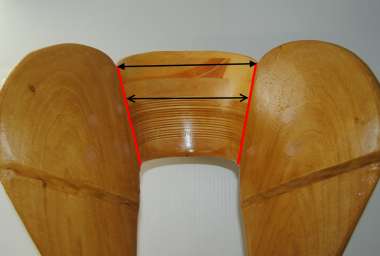
As you look at the underside of a gullet, you see that the lines where the fork meets the bars diverge, getting farther apart as you go from the back to the front. So while the hand hole measurement always stays the same, the measurement across the gullet will vary depending on the stock thickness. A tree with a 3 ¾” stock thickness will measure narrower than a tree with a 5” stock thickness with the same bar spread simply because you are measuring closer to the hand hole. If you kept the front measurement the same, the bars on a tree with a 5” stock thickness would actually be closer together than those on one with 3 ¾” stock thickness.
Bar shape effect on gullet width
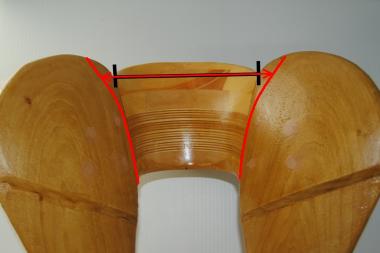 The shape of the front of the bar as it connects to the fork also changes the gullet width measurement. If the bar surface area is broad and the top of the bar comes up high relative to the fork, it will measure narrower than if the bars are sloped off more. We make our bars with a fairly high bar tip. This works to put more surface area on the horse's back to distribute the weight better, but it also results in a narrower gullet width measurement. Our trees may look narrower compared to other trees with the same hand hole width and this is the reason why.
The shape of the front of the bar as it connects to the fork also changes the gullet width measurement. If the bar surface area is broad and the top of the bar comes up high relative to the fork, it will measure narrower than if the bars are sloped off more. We make our bars with a fairly high bar tip. This works to put more surface area on the horse's back to distribute the weight better, but it also results in a narrower gullet width measurement. Our trees may look narrower compared to other trees with the same hand hole width and this is the reason why.
Some people have been concerned that a higher bar tip will pinch a horse's wither, but a horse's wither doesn't go straight up. It narrows much more than the tree. Usually the upper edge of the bar is not in contact with the horse, but having the bar this broad makes for a very smooth transition rather than the possibility of having an edge that concentrates pressure. We have found this to be an advantage for the horse.
Hand hole width
The hand hole is a consistent place to set the spread between the bars. (The hand hole width is marked out on the fork prior to the fork being cut out.) Neither stock thickness, bar shape, fork or gullet shape, or any other factors will change the actual width between the bars set at the hand hole. This is why we and all the hand made tree makers we know of use this measurement to set the distance between the bars even if they talk about gullet width with their customers.
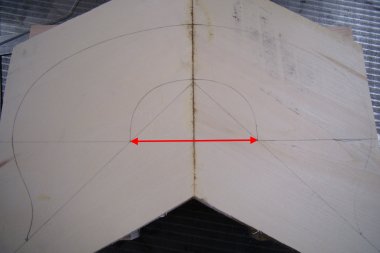 |
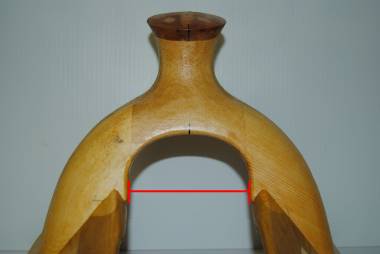 |
General comparison between the two
As we have explained, the gullet width is a very inconsistent measurement. However, it is the one regularly used across the industry so for those not used to hand hole measurements, a very general comparison between the two measurements would be as follows:
| Traditional Gullet Width Measurement | Our Hand Hole Measurement |
| 6 - 6 1/4" | 3 3/4" |
| 6 1/4" - 6 1/2" | 4" |
| 6 1/2" - 6 3/4" | 4 1/4" |
| 6 3/4" - 7" | 4 1/2" |
